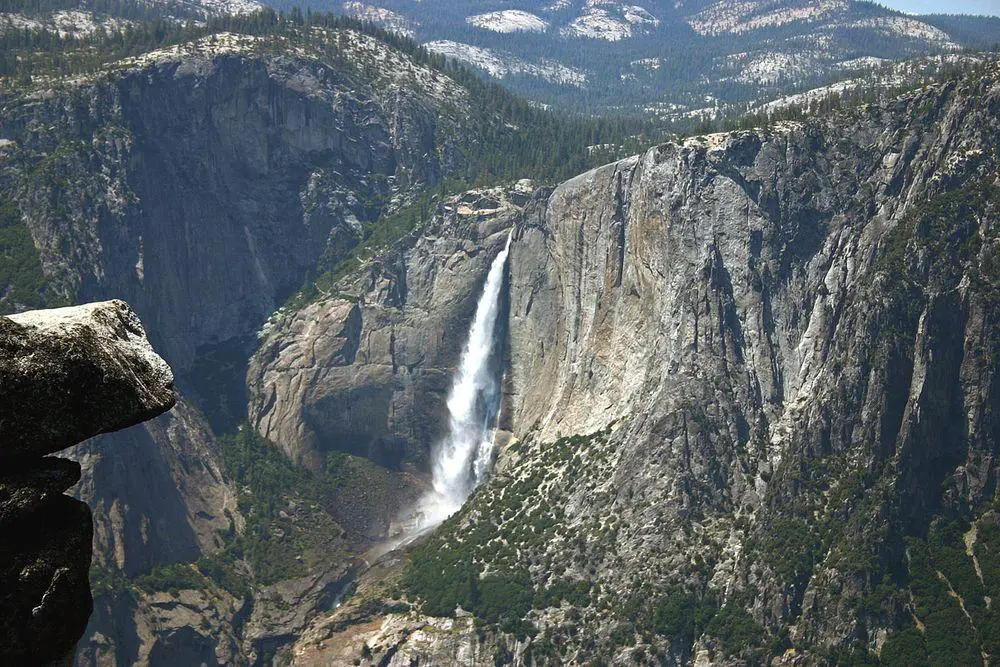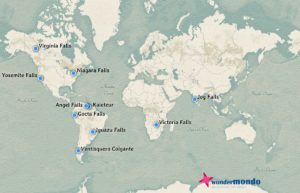World 🢖 North America 🢖 United States 🢖 California
Waterfalls 🢔 Geological wonders 🢔 Categories of wonders
Wonder
Yosemite Falls
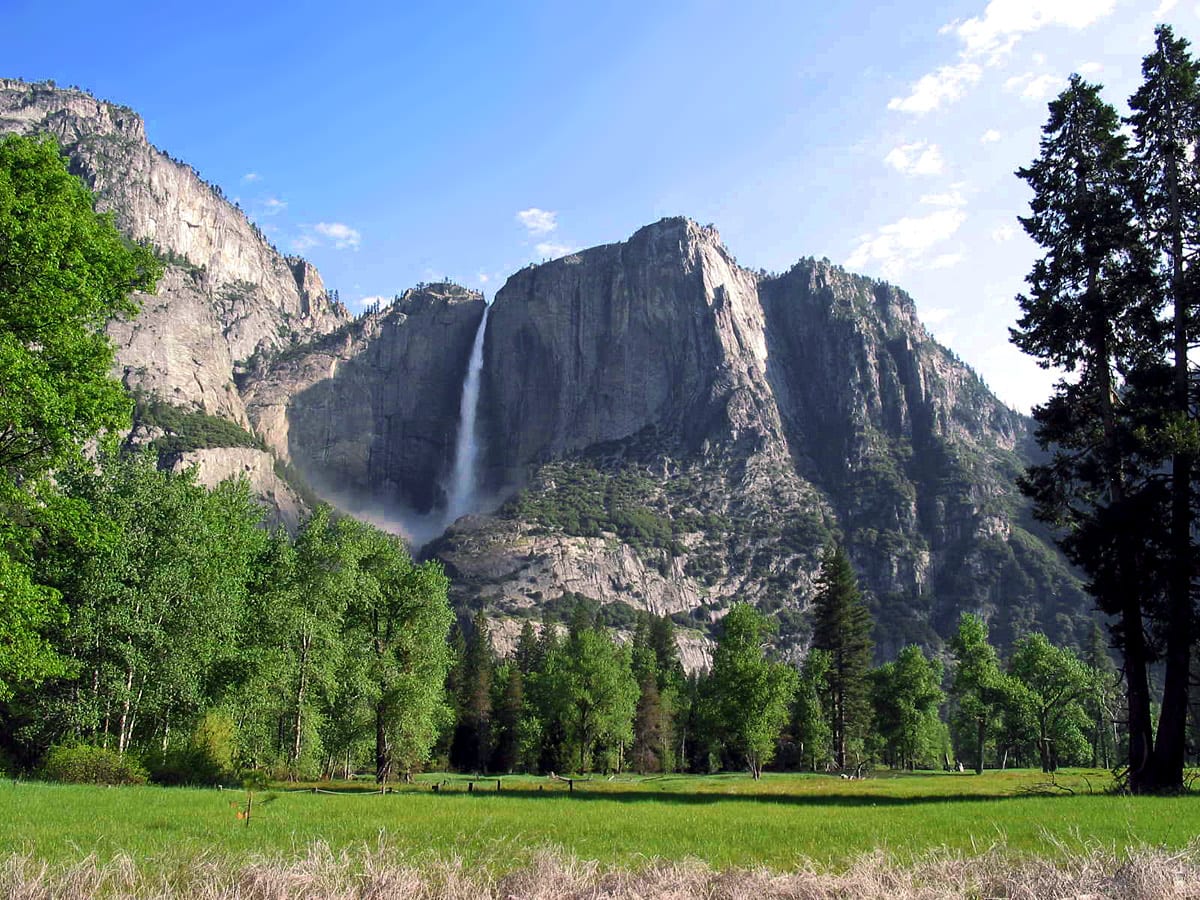
 In short
In short
One of the tallest waterfalls in North America is Yosemite Falls. The total height of this waterfall is 739 m, but especially impressive is the tallest cascade of this waterfall – the whooping 436 m!
 52.4%
52.4%
GPS coordinates
Location, address
Alternate name
Total height
Drops
Highest drop
Width
Average annual flow
Stream
UNESCO World Heritage status
Map of the site
If you see this after your page is loaded completely, leafletJS files are missing.
 In detail
In detail
Yosemite Creek
Yosemite Valley could be one of the most wonderful places on Earth. This 13 km long valley has been shaped by glaciers and is up to 914 m deep.
Valley has many amazing waterfalls, but the largest and tallest is Yosemite Falls. It is formed by Yosemite Creek. This stream flows some 12.8 km before the falls, on its way falling for some 300 m. And then it… whoosh… falls for 739 m over a distance of approximately 700 meters. Afterward, it flows some 1.2 km and enters Merced River.
Here have been developed trails leading towards the waterfall and providing many fine views of it – and from it.
Volume
The volume of water in Yosemite Creek is fluctuating. This is caused by the thin soil on granite surfaces around Yosemite Valley. Water does not accumulate in this thin soil and – as the rain falls, the water is quickly drained by the river network.
Yosemite Falls is especially impressive in May when the snow in the mountains is melting. In this period the force of water is creating a constant tremble of the ground and a deep, unforgettable roar.
After dry summers Yosemite Creek – and Yosemite Falls – get dry. The waterfall can be dry from August to October. But it is enough to have a rainy day – and falls "start" again.
In the winter at the base of the upper fall forms an impressive ice cone. It forms because this supertall waterfall turns into mist, which is frozen on its way.
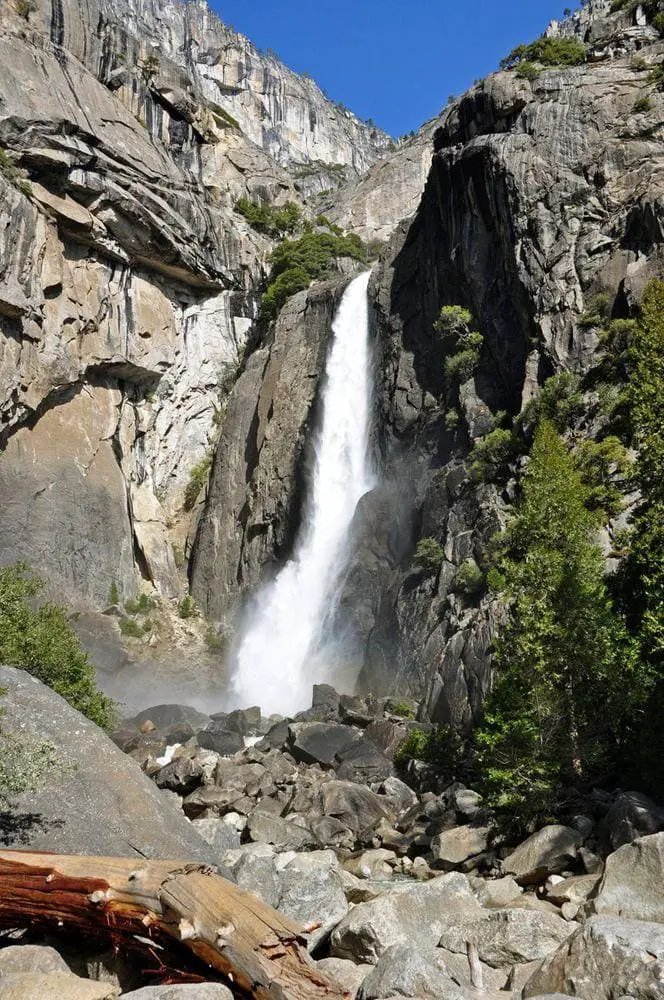
Seven drops
Most descriptions divide Yosemite Falls into three parts – Upper Fall, Middle Cascades, and Lower Fall. As Middle Cascades have five smaller plunges, we can consider that Yosemite Falls has seven drops.
It seems that the last time when the exact height of falls was estimated, was in 1913 – and since then it has not been checked with contemporary methods.
Upper Fall is a 436 m tall cascade. In the upper part of falls the stream hits a ledge – and then the water is thrown in the air and most of it turns into mist before hitting the ground.
Middle Cascades are five smaller plunges in between the two large falls. Yosemite Creek drops here 206 m over the distance of some 550 m. These falls are very impressive as well – but this sight is hidden in a narrow gorge and it is very hard and dangerous to access these cascades.
Lower Fall is well visible, 98 m high drop. For most part it falls free, hitting the cliff closer to the base. Below the falls has formed a smaller pool.
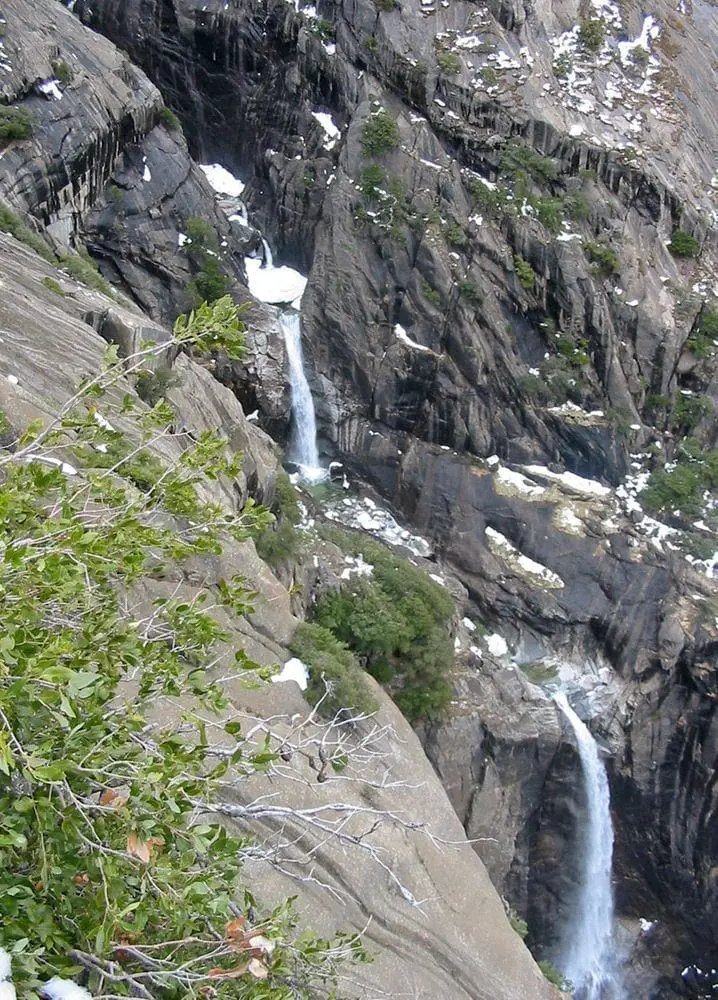
Land of Ahwahnechee
At the base of the waterfall was standing the main center of the natives of Yosemite Valley – Ahwahnechee people. Ahwahnechee means "dwellers of Ahwahnee" – Ahwahnee is the older native placename for Yosemite Valley. The name of the valley has been given by them – "Yo-sem’-i-te" means "adult grizzly bear".
White people – the Mariposa Batallion led by James D. Savage – found the valley in the pursuit of Indians around the 21st of March 1851. Member of Mariposa Batallion – Lafayette Bunnell – gave the Falls their present name – Yosemite Falls. Natives called it simply – "the fall" – Cholock.
Ahwahnechee lived here up to the 20th century. Unfortunately, these people were evicted from their beautiful homeland by the government of the United States. Their last village in the valley was burned down in 1969 for… firefighting practice. Nature conservation ideals of those times required creating a wilderness in Yosemite Valley – thus it was cruelly created.
Ahwahnechee believed that the pool at the base of the falls was inhabited by the spirits of several witches whom they called Poloti.
One local story tells about a woman who came here to take some water from the pool. As she took a bucket full of water, it turned out to be full of… snakes. Later in the night spirits brought an act of revenge – a whirlwind took the house of woman with her and her newborn to the pool and drowned them.
References
- Yosemite Falls. World Waterfall Database. Accessed on June 11, 2012.
Yosemite Falls are included in the following article:
 Linked articles
Linked articles
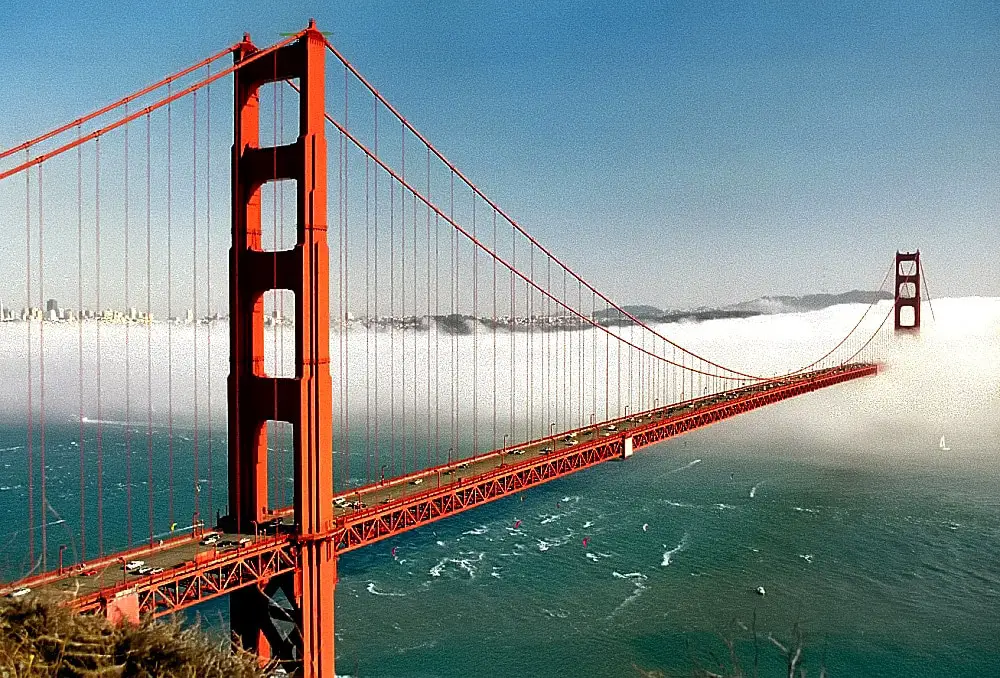
Wonders of California
Although California is one of the states in the United States of America, Americans often compare it to a separate country, e.g. “if California would be a country, it would have the eighth largest economy in the world”. We can go on with this comparison – California has more landmarks and attractions than many large countries of the world.
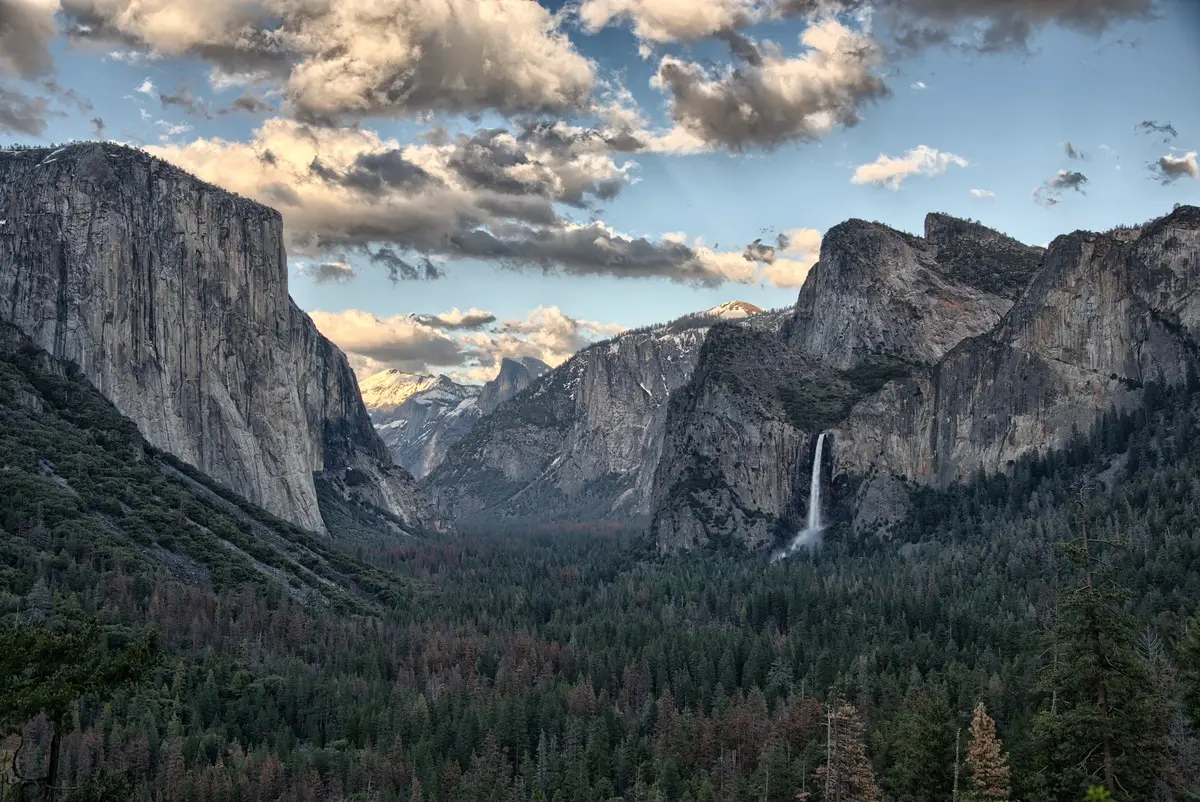
Wonders of the United States
The United States of America is one of the largest countries in the world and offers a wide array of diverse attractions: many are unsurpassed in the world. Highlights of the United States are cliffs, canyons, and rock formations, several impressive downtowns of cities with numerous skyscrapers as well as a rich array of geothermal features, and the giant forest of California.
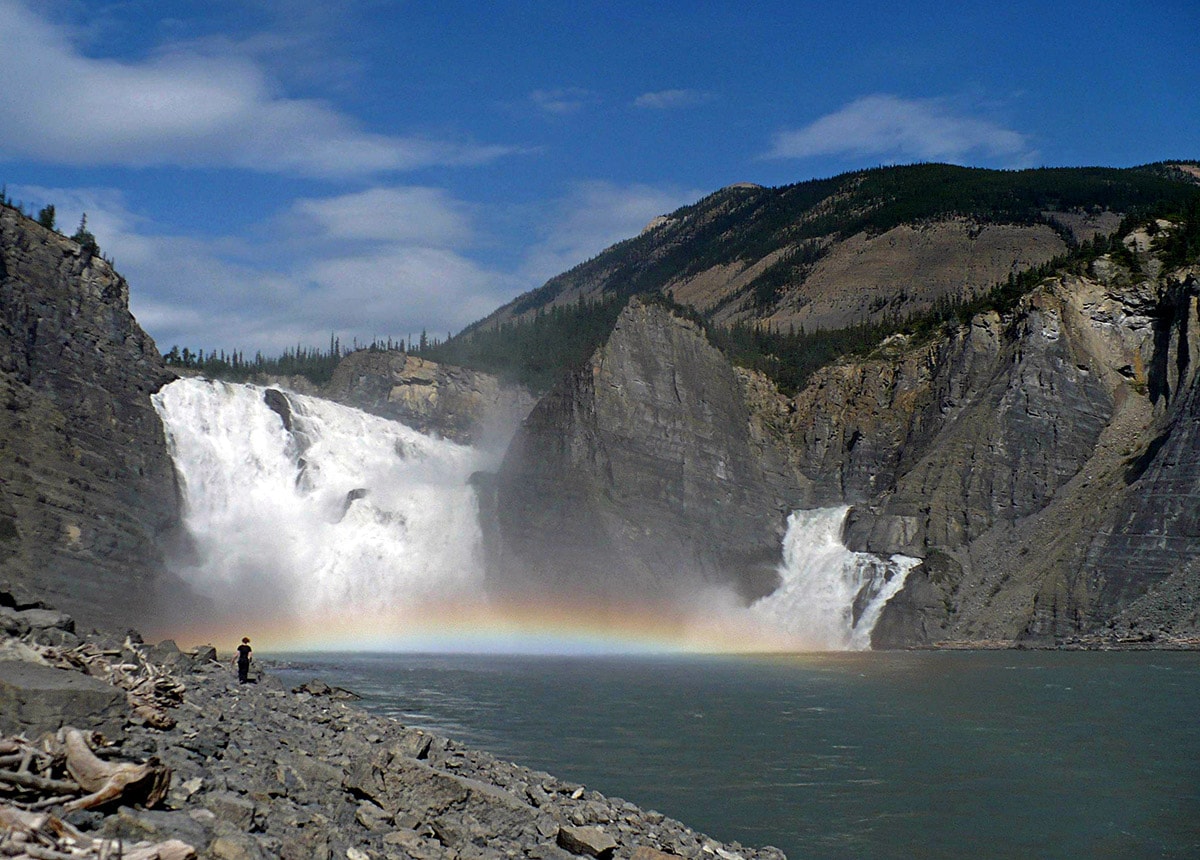
Waterfalls
Some of the most fascinating and awe-inspiring natural monuments are waterfalls or locations where a river abruptly changes its elevation.
 Recommended books
Recommended books
Moon California Waterfalls
California outdoorswoman Ann Marie Brown covers the best of California’s waterfalls, from all areas of the state: Cascade Falls in Lake Tahoe, Limekiln Falls in Big Sur, and South Fork Kaweah Falls in Sequoia National Park, among others. Brown includes various travel strategies, including Top 5 Unusual Waterfalls and Top 5 Waterfalls at Family Campgrounds.
Top Trails Yosemite: 50 Must-do Hikes for Everyone
It’s easy to feel overwhelmed by the amazing number of choice destinations in Yosemite National Park―Yosemite Valley, Glacier Point, Tuolumne Meadows, Hetch Hetchy, and many other famed locales. Now in full color, Top Trails Yosemite by Elizabeth Wenk and Jeffrey P. Schaffer helps you sort through the options. It doesn’t describe every possible hike in the Park, only the best.

